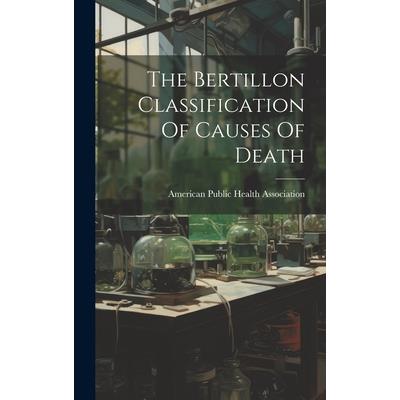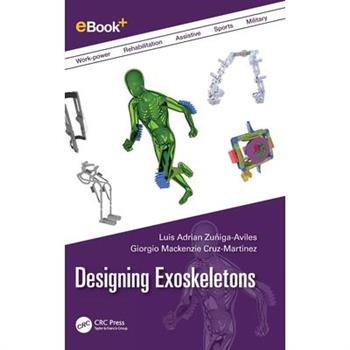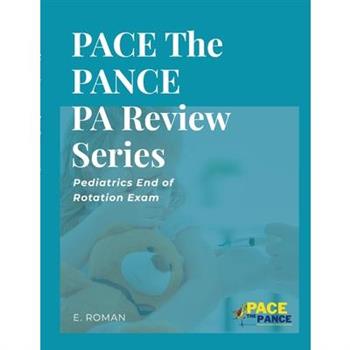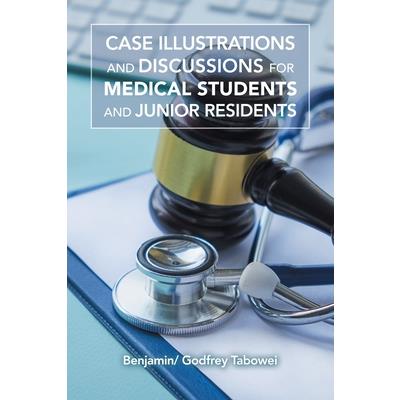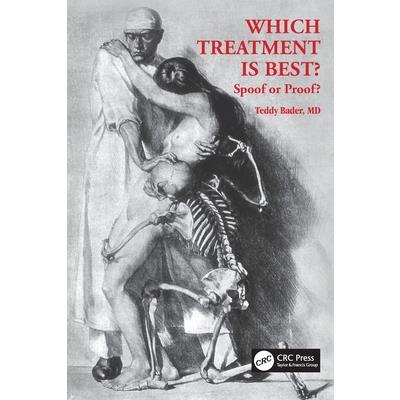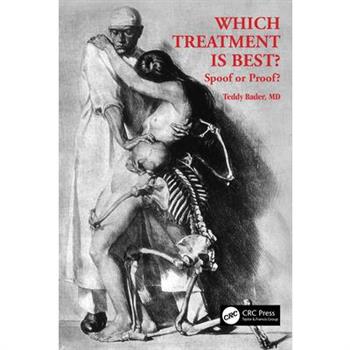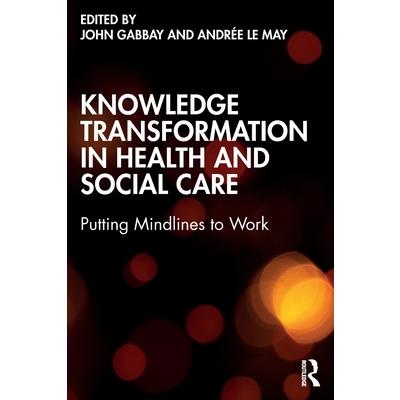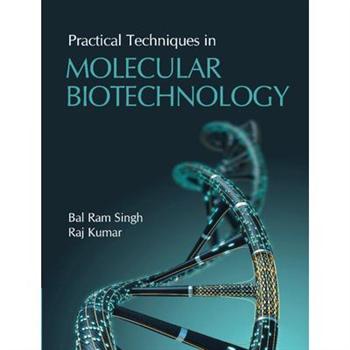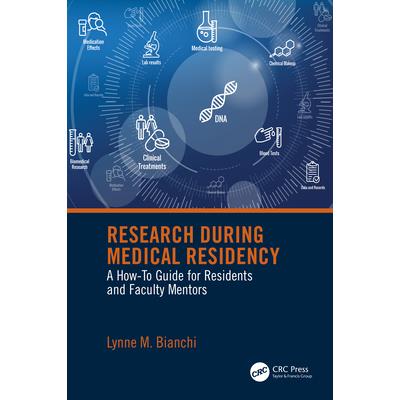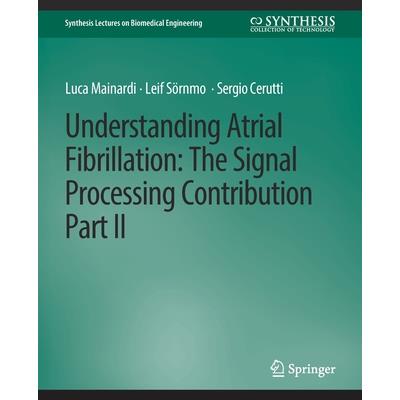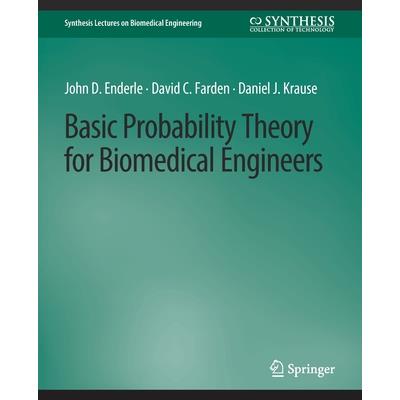The Bertillon Classification Of Causes Of Death
This reference work provides a comprehensive classification system for the causes of death, developed by the French criminologist Alphonse Bertillon in the late 19th century. Widely used in public health and medical research, this system organizes causes of death into categories and subcategories, providing a valuable tool for epidemiologists, statisticians, and medical professionals.This work has been selected by scholars as being culturally important, and is part of the knowledge base of civilization as we know it.This work is in the "public domain in the United States of America, and possibly other nations. Within the United States, you may freely copy and distribute this work, as no entity (individual or corporate) has a copyright on the body of the work.Scholars believe, and we concur, that this work is important enough to be preserved, reproduced, and made generally available to the public. We appreciate your support of the preservation process, and thank you for being an important part of keeping this knowledge alive and relevant.
MRI and Ultrasound Region of Interest
The region of interest (ROI) holds paramount significance in the realms of MRI (Magnetic Resonance Imaging) and ultrasound; two distinct yet complementary medical imaging techniques. In MRI; the ROI refers to the specific anatomical area or volume under scrutiny; meticulously chosen to unravel intricate details within the body. Renowned for its exceptional tissue differentiation and high-resolution capabilities; MRI excels in portraying soft tissues; organs; and intricate structures; proving invaluable in diverse applications like brain; musculoskeletal; and abdominal imaging.Conversely; ultrasound showcases its prowess in real-time imaging; adeptly capturing dynamic processes within the chosen ROI using high-frequency sound waves. The ultrasound ROI pertains to the localized area that undergoes scrutiny; often targeted at fluid-filled regions and superficial structures. This modality boasts portability; safety due to lack of ionizing radiation; and its integral role in obstetric; cardiac; and abdominal imaging.In both MRI and ultrasound; the selection of the ROI is guided by clinical objectives; patient history; and diagnostic requisites. These modalities cater to unique clinical scenarios; MRI; with its multi-planar precision and tissue contrast; delves deep into intricate anatomical zones; while ultrasound; with its immediate insights and non-invasive nature; excels in visualizing real-time activities and fluid-filled spaces. Collectively; these techniques epitomize modern medical imaging's diverse potential; offering a personalized approach to diagnosis and treatment through the judicious selection of the region of interest.
Contributions To Medical Research Dedicated To Victor Clarence Vaughan
This volume contains a collection of papers dedicated to the memory of Victor Clarence Vaughan, an influential figure in the field of medical research. Written by leading experts in their respective areas, the papers cover a range of topics including bacteriology, immunology, and pathology. Whether you are a medical professional or a student of science, this book provides valuable insights into the latest developments in medical research.This work has been selected by scholars as being culturally important, and is part of the knowledge base of civilization as we know it.This work is in the "public domain in the United States of America, and possibly other nations. Within the United States, you may freely copy and distribute this work, as no entity (individual or corporate) has a copyright on the body of the work.Scholars believe, and we concur, that this work is important enough to be preserved, reproduced, and made generally available to the public. We appreciate your support of the preservation process, and thank you for being an important part of keeping this knowledge alive and relevant.
Papers And Addresses; Volume 3
Papers and Addresses is a collection of speeches and essays by William Henry Welch, a renowned physician, pathologist, and educator. It includes pieces on a wide range of topics, including medical education, infectious diseases, and public health, as well as speeches given on various occasions. With insightful commentary and a wealth of knowledge, this book is an excellent resource for anyone interested in medicine or public health.This work has been selected by scholars as being culturally important, and is part of the knowledge base of civilization as we know it.This work is in the "public domain in the United States of America, and possibly other nations. Within the United States, you may freely copy and distribute this work, as no entity (individual or corporate) has a copyright on the body of the work.Scholars believe, and we concur, that this work is important enough to be preserved, reproduced, and made generally available to the public. We appreciate your support of the preservation process, and thank you for being an important part of keeping this knowledge alive and relevant.
Affect as Contamination
Bringing the concept of contamination into dialogue with affect theory and bioart, Agnieszka Wolodzko urges us to rethink our relationship with ourselves, each other and other organisms. Thinking through the lens of contamination, this book provides an innovative approach to understanding the leaky, porous and visceral nature of our bodies and their endless interrelationships and, in doing so, uncovers new ways for thinking about embodiment. Affect theory has long been interested in transmission or contagion but, inspired by Spinoza and Deleuze, Affect as Contamination goes further, as contamination is concerned with the materiality of bodies and their affective encounter with other matter. This brings urgency to the notion of affect, not only for bioart that works with risky bodies but also for understanding how to practise our bodies in the age of biotechnological manipulation and governance. Using challenging and transgressive bioart projects as provocative case studies for rethinking affect and bodily practice, Wolodzko follows various 'contaminants' from blood, hormones and viruses to food, glitter and plants. This takes the form of both personal accounts of encounters with the contaminations of bioart and critical analyses of aesthetic, material and technical objects, with each one highlighting in different ways the risky and uncertain nature of contamination. Affect as Contamination is an urgent and original meditation on just what it means to be living, and practising our bodies, in an era where biotechnology contaminates all aspects of our lives.
Dissemination and Implementation Research in Health
The ultimate guide to dissemination and implementation research for public health, medicine, and the social sciencesIn the past twenty years, dissemination and implementation (D&I) research has sought to narrow the gap between the discovery of new knowledge and its application in public health, mental health, and health care settings. The challenges of moving research to practice and policy are universal, and future progress calls for collaborative partnerships and cross-country research. The fundamental tenet of D&I research-taking what we know about improving health and putting it into practice-must be the highest priority. Dissemination and Implementation Research in Health is the definitive roadmap to effecting change in health and science from today's leading D&I researchers. With insights from around the globe, these scholars collectively address key issues in the field including how to evaluate evidence based on effective interventions, how to design an appropriate study, and how to track a set of essential outcomes. Their work has been updated in this third edition with a strong focus on health equity and new chapters on de-implementation, scale-up and sustainment, and training and capacity building. This new edition also focuses on barriers to uptake of evidence-based interventions in the communities where people live their lives and from the social service agencies, hospitals, and clinics where they receive care. Now in its third edition, Dissemination and Implementation Research in Health remains the quintessential guide to making research more consequential for researchers and practitioners in health and the social sciences.
Guarding Against Pertussis. The Efficacy and Advantages of the TdaP Vaccine
Scientific Study from the year 2023 in the subject Medicine - Biomedical Engineering, grade: 3, language: English, abstract: This paper aims to elucidate the importance of TdaP vaccines in the prevention of pertussis, highlight the increased risk of this disease in adults, and underscore the benefits of using acellular vaccines over whole-cell vaccines. This text underscores the escalating threat of Pertussis (whooping cough) in adults and its lethal repercussions on infants with lesser immunity. This has led to innovations in vaccine development, particularly the emergence of acellular vaccines like the TdaP vaccine that effectively combats Tetanus, Diphtheria, and Pertussis. This vaccine offers the advantage of fewer side effects compared to whole-cell vaccines and contains purified antigenic components of Bordetella pertussis obtained through various purification techniques. The increased risk of pertussis in adults have become an important public-health issue. This contagious disease spreads to infants who have lesser immunity resulting in their death. Increased death rate caused the inventions of vaccinations to prevent this disease. Concerns regarding the safety of whole-cell vaccines used for pertussis treatment lead to the development of acellular pertussis vaccines like TdaP vaccines. This combination vaccine is 71-85% effective in the treatment of adults suffering from diseases tetanus, diphtheria and pertussis. These vaccines have limited side effects when compared to whole-cell vaccines as they contain purified antigenic components of Bordet Ella pertussis (Pertussis toxin, Filamentous hemagglutinin and Pertactin) that are obtained by the purification techniques Tangential flow filtration, Column Chromatography and Dialysis. These components are then formulated for purified vaccine production.
Designing Exoskeletons
Designing Exoskeletons focuses on developing exoskeletons, following the lifecycle of an exoskeleton from design to manufacture. It demonstrates how modern technologies can be used at every stage of the process, such as design methodologies, CAD/CAE/CAM software, rapid prototyping, test benches, materials, heat and surface treatments, and manufacturing processes. Several case studies are presented to provide detailed considerations on developing specific topics. Exoskeletons are designed to provide work-power, rehabilitation, and assistive training to sports and military applications. Beginning with a review of the history of exoskeletons from ancient to modern times, the book builds on this by mapping out recent innovations and state-of-the-art technologies that utilize advanced exoskeleton design. Presenting a comprehensive guide to computer design tools used by bioengineers, the book demonstrates the capabilities of modern software at all stages of the process, looking at computer-aided design, manufacturing, and engineering. It also details the materials used to create exoskeletons, notably steels, engineering polymers, composites, and emerging materials. Manufacturing processes, both conventional and unconventional are discussed--for example, casting, powder metallurgy, additive manufacturing, and heat and surface treatments. This book is essential reading for those in the field of exoskeletons, such as designers, workers in research and development, engineering and design students, and those interested in robotics applied to medical devices.
PACE The PANCE PA Review Series
Prepare for your Pediatrics End of Rotation (EOR) Exam with PACE The PANCE's PA Review Series. In this book, we cover hundreds of practice questions to help you succeed on your exam. Our book is written in a rapid-review style format covering the definition, etiology, risk factors, signs and symptoms, labs, imaging, diagnosis, treatment, health maintenance, and patient education that are commonly presented on your EOR. This book is for you if you are seeking on-the-spot answers to questions commonly tested. There are additional clinical vignettes woven throughout the book to enhance your experience. Each vignette is crafted with high-yield information that commonly presents on clinical exams. There are detailed answers for each question that evaluate students' knowledge and identify areas for further focus. Look no further for the best go-to book to master and retain knowledge for your didactic exams, EORs, clinical clerkships, PANCE and PANRE. Our strategic two-column format prepares students to actively recall essential information and transcend their level of understanding for their boards and beyond. At the conclusion of this book, you will find a 50 question MCQ practice EOR mock exam to test your wits and knowledge of the content for your Pediatric EOR.
The Handbook of Polyhydroxyalkanoates
The third volume of the Handbook of Polyhydroxyalkanoates (PHA) focusses on the production of functionalized PHA bio-polyesters, the post-synthetic modification of PHA, processing and additive manufacturing of PHA, development and properties of PHA-based (bio)composites and blends, the market potential of PHA and follow-up materials, different bulk- and niche applications of PHA, and the fate and use of spent PHA items. Divided into fourteen chapters, it describes functionalized PHA and PHA modification, processing and their application including degradation of spent PHA-based products and fate of these bio-polyesters during compositing and other disposal strategies. Aimed at graduate students and professionals in Polymer science, chemical engineering and bioprocessing, it: Covers current state of the art in the development of chemically modifiable PHA including mult-istep modifications of isolated biopolyesters, short syntheses of monomer feedstocks and so forth.Describes design of functionalized PHA-based polymeric materials by chemical modification .Illustrates preparation of bioactive oligomers derived from microbial PHA and synthetic analogues of natural PHA oligomers.Discusses processing and thermomechanical properties of PHA.Reviews advantages of PHA against other bio-based and conventional polymers with current applications and potential uses of PHA-based polymers highlighting innovative products.
Case Illustrations and Discussions for Medical Students and Junior Residents
There are many standard text books of surgery covering variousaspects of surgery nd their sub-specialties. The purpose of this book is to assist students especially junior onces to acquire the necessary skills in history taken, physical examination, important investigations and the management of surgical patients. The methodology used was clinical history case demonstration and physical examination, summary of the important clinical investigations and their results, treatment offered and their outcome. Thereafter the aethopathology of the disease condition (where necessary), some modern investitagions and their likely outcome, current treatment options available, complications of the disease condition and their likely differential diagnosis were discussed in outline fashion. Repetations in some of the topics is deliberate and inevitable. This is to give the student deep and reflective insight into the disease conditions, their mode of presentation and possible current management options available. Some of the chapters have short vignettes which is meant to be brain teasers for both undergraduates and post graduate students preparing for the surgical medical exams such as objective structured clinical examination ((OSCE), medical viva, written examination and clinical examination. It is hoped to serve as a fast and focused revision guide to students of surgery and would be of immense assistance to students during ward round, ground-round and tutorials. It will improve their skill in case presentation, and in answering questions clearly, precisely and in unambiquous manner during their period of apprenticeship. It is therefore not a replacement for standard text books of surgery and will only be useful to those who have read through standard text books of surgery. Benjamin I Tabowei.
Emerging Pandemics
Pandemics are often associated with viruses and bacteria occurring in wildlife in natural environments. Thus, diseases of epidemic and pandemic scale are mostly zoonotic, some of which include AIDS, Zika virus, severe acute respiratory syndrome (SARS), and COVID-19. The book seeks to explore the documented history of pandemics and various epidemics that have the potential of turning into pandemics with the warming climate, pollution, and environmental destruction.The book covers some of the most essential elements of the diseases of pandemic nature and their relationship with the environment: Environment as a reservoir of human diseases Climate change: emerging driver of infectious diseases Occurrence and environmental dimensions of specific pandemics and epidemics Pandemics, environment, and globalisation: understanding the interlinkage in the context of COVID-19 Climate change and zoonotic diseases: malaria, plague, dengue, encephalitis Tuberculosis: an old enemy of mankind and possible next pandemic Lassa fever in Nigeria: case fatality ratio, social consequences, and prevention There are cases where scientists fear that many epidemics have the potential of turning into pandemics, if we do not pay attention to them, and measures are not being taken to control these occurrences. This book attempts to provide integrated risk assessment on pandemics like COVID-19. It covers fundamental factors of global disease outbreaks through the complexity and severity of consequences. The information collated in this book will help in the design of mitigation measures, including behavioral changes that could prevent the emergence of such pandemics, thus protecting human life and minimising losses incurred due to diseases of such magnitude.
Biotechnology and Biological Sciences
Biotechnology and Biological Sciences III includes contributions on: microbial biotechnology, bioinformatics and drug designing, innovations in pharmaceutical industries and food processing industries, bioremediation, nano-biotechnology, and molecular-genetics.
The FDA and Worldwide Quality System Requirements Guidebook for Medical Devices
This new and expanded second edition maintains the organizational approach of the first and includes the requirements and guidance contained in the Quality System Regulation (QSReg), the ISO 13485:2003 standard, the ISO/TR 14969:2004 guidance document, and, as appropriate, a number of the FDA and Global Harmonization Task Force (GHTF) guidance documents.This second edition also addresses a number of additional topics, such as the incorporation of risk management into the medical device organization's QMS, QMS issues related to combination products, the key process interactions within a QMS, effective presentation of and advocacy for a QMS during FDA inspections and third-party assessments, and future FDA compliance and standards activities. The organization of the guidebook is based on the order of the requirements in the QSReg. For each substantive requirement section there is: A verbatim statement of the QSReg requirement. A description of the comparable requirement in ISO 13485:2003, focusing on any additions to or differences from the requirements contained in the QSReg.Excerpts of the FDA responses to relevant comment groups contained in the Preamble to the QSReg. Excerpts from various FDA guidance documents related to quality management systems. A description of the relevant guidance contained in ISO/TR 14969:2004, focusing on any additions to or differences from the guidance in the Preamble and other FDA guidance documents, and, if useful, excerpts from relevant GHTF guidances. Authors' notes giving guidance derived from the authors' sixty years of regulatory compliance experience. This guidance book is meant as a resource to manufacturers of medical devices, providing up-to-date information concerning required and recommended quality system practices. It should be used as a companion to the regulations/standards themselves and texts on the specific processes and activities contained within the QMS.
Biotech Animals in Research
This book explores central aspects of genetic modification of animals for scientific purposes in the context technological possibilities, regulatory issues in different regions, animal welfare implications and wider ethical issues exemplified through current theories and frameworks.This discussion of lab animals produced through modern biotechnologies becomes increasingly pressing as CRISPR-Cas9 technology advances rapidly, challenging legal and ethical frameworks all over the world. Such animals are now affordable and readily available to almost every branch of scientific research. This not only raises enormous potential for creating 'tailored' models for human diseases but also rubs up against the traditional guiding principles (the 3Rs) for the humane use of animals for scientific experiments and raises wider ethical issues around death, integrity and naturalness. In this book, expert authors from diverse backgrounds in laboratory animal care, animal research, technology and animal rights explore a range of topics, from the science behind biotech research animals and the regulation of their use, to utilitarian, animal rights, virtue ethics and ethics of care, and critical animal studiers' perspectives on the use of these technologies.Whatever your background or role in animal research, this book will challenge and stimulate deeper consideration of the benefits, disadvantages and ethical consequences of the use of biotechnology in the animal laboratory.
Overwhelming
So you are that lover. Did she come first. I mean, are you that man.
Biosignal Processing
Biosignal processing is an important tool in medicine. As such, this book presents a comprehensive overview of novel methods in biosignal theory, biosignal processing algorithms and applications, and biosignal sensors. Chapters examine biosignal processing for glucose detection, tissue engineering, electrocardiogram processing, soft tissue tomography, and much more. The book also discusses applications of artificial intelligence and machine learning for biosignal processing.
Biomimetics - Bridging the Gap
Biomimetics is an innovative form of technology that emulates, imitates, or mimics nature in order to improve human lives by creating desirable solutions. It is the study of nature and natural phenomena in an attempt to understand its laws, principles, and underlying mechanisms, to obtain ideas from nature, and to apply concepts that may benefit science, engineering, pharmacy, dentistry, and medicine. Smart/intelligent biomaterials for tissue engineering and regenerative medicine are fine examples of biomimetics. Yet, biomimicry can go above and beyond the simplistic inspiration and use of natural properties as the basis for the innovation of new products. It bridges the gap between the lab and the industry via the intra-disciplinary design and formulation of functional solutions combining knowledge, methods, techniques, and advances in the fields of chemistry, biology, architecture, engineering, medicine, pharmaceutics, dentistry, and biomedical engineering. Three-dimensional printing, self-healing nanocoatings, hydrogels, bio-mechanical carbon nanotubes, stimuli-sensitive and -responsive cell/drug delivery systems, and robotics are some of the topics covered in this book. In a simplified style, the book provides interested readers with a practical reference approaching biomimetics and biomimicry from a realistic and translational perspective, discussing problems and offering solutions and including studies ranging from basics to the clinic to scale-up and industrial or go-to-market obstacles. Through Biomimetics - Bridging the Gap, you'll quickly discover that biomimicry is more than just looking at a silkworm (silk is one of the first examples in history) or at the shape of a flower, a damselfly, or even a humpback whale and becoming re-inspired. Biomimicry is an intra-/multi-disciplinary methodology and technological-oriented approach presently employed by the most innovative organizations on this planet.
Cryopreservation - Applications and Challenges
Cryopreservation is the preservation of cells at sub-zero temperatures. Although useful, the process is not without its challenges. One of the major challenges is the formation of ice crystals in the cells to be preserved. However, vitrification, where glass is formed instead of crystals, can be achieved using cryoprotection agents (CPAs). This book provides a comprehensive overview of cryopreservation and its applications. It discusses advancements in the field, challenges, guidelines, and recommendations for successful germplasm conservation. Chapters discuss the use of CPAs, cryopreservation of fish sperm, cryopreservation of oocytes and sperms, female fertility preservation, cryopreservation of large structures and tissues, and much more.
Biomedical Research, Medicine, and Disease
Biomedical research is the first step towards the creation of new medications and treatments that help to manage different types of health conditions and diseases. The prevention and cure of diseases would be practically impossible without such type of research. Although the drug discovery and development processes are far too costly, time-consuming, prone to failure, and have low success rate, today the term "translational research or medicine" seems to have become trendy, yet it is insufficient. The present book is a sincere attempt by dedicated researchers to convey the importance of translational biomedical research, medicine, and disease, primarily, basic and clinical difficulties in the translation of diagnostic measures, pharmaceutical advances, biomarkers, diagnostics, and therapeutics.This book is meant for researchers, scientists, healthcare professionals, industry, innovators, and students of biomedical sciences, as well as for those involved in the basic sciences, biochemistry, biotechnology, biophysics, and life sciences in general.The volume comprehensively covers: Emerging technologies for health care Various aspects of biomedical research toward understanding of pathophysiology of the diseases Advances in improvement in diagnostic procedures and therapeutic tools The fundamental role of biomedical research in the development of new medicinal products
Taurine and the Mitochondrion
Taurine, or 2-aminoethanesulfonic acid, is one of the most abundant sulfur-containing amino acids in the human body. It is found in the heart, brain, retina, and skeletal muscles, and is synthesized in the pancreas. Studies have revealed that taurine is of high physiological importance: it protects against pathologies associated with mitochondrial diseases, and linked processes like aging, metabolic syndrome, cancer, cardiovascular diseases, and neurological disorders. It is also used as a nutritional supplement. Taurine and the Mitochondrion: Applications in the Pharmacotherapy of Human Diseases explores the significance of taurine in the biology of mitochondria. It also explains its role as a pharmacological agent for treating different diseases. Readers will gain an insight into the crucial role it plays in human physiology and the benefits of taurine supplements.Topics covered in this reference include - Synthesis of taurine and its dietary sources - The Role of taurine in mitochondrial health - Taurine as a neurotransmitter - Beneficial effects of taurine in physiological systems such as the reproductive system, renal system, and the gastrointestinal tract - Hepatoprotective and anti-inflammatory properties of taurine - The anti-aging promise of taurine supplementation - Role of taurine supplementation in obesity
Brain cholinergic and dopaminergic functions in streptozotocin induced diabetic rats
Diabetes mellitus is a common metabolic disorder characterised by hyperglycaemia with disturbances of carbohydrate, fat and protein metabolism resulting from defects in insulin secretion, insulin action, or both (Feldman, 1997). Diabetes mellitus is known to be associated with neurological complications in both the peripheral nervous system (PNS) and the central nervous system (CNS) (Greene, 1999). Even though insulin secretion is mainly regulated by changes in circulating concentrations of glucose and other metabolic fuels, stimuli such as neurotransmitters and gastrointestinal hormones makes an important contribution to the overall regulation of pancreatic beta cell function. Controlling blood sugar is essential for avoiding long-term complications of diabetes like learning and memory deficit. Greater understanding of CNS involvement could lead to new strategies to prevent or reverse the damage caused by diabetes mellitus. Acetylcholine, a major neurotransmitter from the autonomic nervous system, regulates the cholinergic stimulation of insulin secretion, through interactions with muscarinic receptors (Satin & Kinard, 1998; Ahren, 2000; Gilon & Henquin, 2001). Dopamine in the CNS is involved in the control of both motor and emotional behaviour (Vallone et al., 2000) and peripherally modulates insulin secretion in the pancreatic islets (Nogueira et al., 1994) The autonomic nervous system plays a prominent role in the regulation of insulin secretion. It has been proposed that neuronal afferent signals delivered to the pancreatic ����-cell through the vagus are responsible for the cephalic phase of insulin secretion. These effects are mediated by acetylcholine, which is released from nerve terminals and acts upon muscarinic cholinergic receptors in the ����-cell plasma membrane (Sharp et al., 1974; Berthoud et al., 1980; Mathias et al., 1985; Ahren, 2000). Cholinergic agonist carbachol increases insulin secretion from isolated rat islets (Zawalich, 1989b). Carbachol stimulated insulin secretion is inhibited by atropine.
Studies on Wines and Fuel Alcohol Production
THESIS Submitted to the Punjab Agricultural University in partial fulfillment of the requirements for the degree of MASTER OF SCIENCE IN MICROBIOLOGY.ABSTRACTSubstandard and waste mango (Mangifera indica) variety Dussehri was utilized for ethanol fermentation by Saccharomyces Cerevisiae var. ellipsoideus strain montrachet (@ 15% v/v).Ethanol 9.0% v/v was produced from the substrate with initial TSS of 20.0簞 B (pH 5.0). The optimum fermentation period was 96 hours at 30簞 C. Potassium metabisulphite (KMS @ 50 ppm) prevented contamination.Chemical analysis and sensory evaluation have classified the mango wine as of commercially outstanding quality. Aqueous ethanol was dehydrated with Calcium chloride (@18 gm/100 ml) yielding 99.5% ethyl alcohol which can be used as liquid fuel.
Thirteen Tunnels
On September 17, 2022, the literary world, indeed the whole world, lost a unique voice with the passing of Suzanne "Hammer" Samples. Her final journey began in 2014 with a brain tumor diagnosis. She chronicled her struggles and triumphs even as she worked through post-surgery rehab including regaining the loss of arm and hand function. Suzanne's rare courage and candor gave us a brutally honest and unflinching view of her life. Though she "nagged" her editor and publisher to get her first book into print before she died, Suzanne outlived her prognosis. The memoir, "Frontal Matter: Glue Gone Wild" went on to be named among the best books of 2019 by Kirkus Reviews and sent Suzanne on a phenomenal book tour where she wowed listeners with her experiences, stellar personality and dark wit. She continued on to write two sequels, "Stargazing in Solitude" published to acclaim in 2021, and the "13 Tunnels", even as she returned to teaching and started a literary magazine. Her trilogy offers insight, comfort, and understanding to the patients, caregivers, and loved ones dealing with this and similar devastating diagnoses. Suzanne lived life to the fullest and gave us great gifts along the way. She will be missed. -- Barbara Lockwood and Lisa Kastner
Which Treatment Is Best? Spoof or Proof?
A young woman cries, "Please don't let me die!" Has she received the best treatment? What is the best treatment? How do we know? Life-threatening disease prompts these questions in everyone. Which Treatment Is Best? Spoof or Proof? explains the best scientific evidence for any treatment-the randomized controlled trial. This book begins with rotten humors as the source of all diseases. The reader is guided through serious attempts in history to treat disease, but which now seem amusing. The story ends with the randomized controlled trial and how to interpret it. The text will help students and clinicians understand this universal language of clinical research worldwide. Key Features Describes the development of the randomized, controlled trial as the gold standard of proof Unravels the meaning of "randomized," "double-blind," and "p-values" in a simplified manner for students and clinicians Contains timeless information on how medical evidence can be understood
Which Treatment Is Best? Spoof or Proof?
A young woman cries, "Please don't let me die!" Has she received the best treatment? What is the best treatment? How do we know? Life-threatening disease prompts these questions in everyone. Which Treatment Is Best? Spoof or Proof? explains the best scientific evidence for any treatment-the randomized controlled trial. This book begins with rotten humors as the source of all diseases. The reader is guided through serious attempts in history to treat disease, but which now seem amusing. The story ends with the randomized controlled trial and how to interpret it. The text will help students and clinicians understand this universal language of clinical research worldwide. Key Features Describes the development of the randomized, controlled trial as the gold standard of proof Unravels the meaning of "randomized," "double-blind," and "p-values" in a simplified manner for students and clinicians Contains timeless information on how medical evidence can be understood
Statistics at Square Two
STATISTICS AT SQUARE TWO An easy-to-follow exploration of intermediate statistical techniques used in medical research In the newly revised third edition of Statistics at Square Two: Understanding Modern Statistical Applications in Medicine, a team of distinguished statisticians delivers an accessible and intuitive discussion of advanced statistical methods for readers and users of scientific medical literature. This will allow readers to engage critically with modern research as the authors explain the correct interpretation of results in the medical literature. The book includes two brand new chapters covering meta-analysis and time-series analysis as well as new references to the many checklists that have appeared in recent years to enable better reporting of contemporary research. Most examples have been updated as well, and each chapter contains practice exercises and answers. Readers will also find sample code (in R) for many of the analyses, in addition to: A thorough introduction to models and data, including the different types of data, statistical models, and computer-intensive methods Comprehensive explorations of multiple linear regression, including the interpretation of computer output, diagnostic statistics such as influential points, and many uses of multiple regression Practical discussions of multiple logistic regression, survival analysis, Poisson regression and random effects models including their uses, examples in the medical literature, and strategies for interpreting computer output Perfect for anyone hoping to better understand the statistics presented in contemporary medical research, Statistics at Square Two: Understanding Modern Statistical Applications in Medicine will also benefit postgraduate students studying statistics and medicine.
Biowaste and Biomass in Biofuel Applications
This book reflects the new dimension of biofuel production from its introductory principles to the advancements in future prospective. It summarizes the rationale for changes in liquid fuel utilization and selection of new technologies with an aim to make biofuel cost-effective to move towards a carbon-neutral approach.
Knowledge Transformation in Health and Social Care
The term 'mindlines' has become common currency in the world of research implementation and evidence-based practice. This book updates, develops and applies the mindlines model more widely. It sheds light on how we can realistically mobilise and transform research-based evidence into practice in context.   This illuminating book shows how the mindlines model can be put to work. It highlights how practitioners collectively share and internalise implicit, flexible ways of rapidly handling complex clinical situations. Drawing on research and reflective studies from practice, education, and guidelines-development across a wide range of international health and care settings, the authors unpack the general components of mindlines. They find practical ways to uncover, bring together and apply specific mindlines to improve practice; and to develop evidence-based healthcare policy, practice and education in ways that capitalise on the crucial role of mindlines. Closely edited by the originators of the mindlines model, this book brings together the work of a cohesive group of researchers and practitioners to showcase and develop its theory and consequences.  It is an essential read for all those interested in knowledge mobilisation, evidence-based practice, and research implementation both within healthcare and beyond.
Intoxication of Aluminum on Biochemical and Histopathological
Qualitative aspect of toxicology are significant as they are basic to the Security estimate procedure into which, individual first determine the toxicological Profile of the material and next establish how the chemical can be their employ Carefully to stop injury (Plaa, 1982). According to the direction of Durham (1974), toxicity is the skill of a substance particle or compound in the direction of create injury just the once it reaches susceptible place, which is determined through the dose. Cairns (1984) report to starting a regulatory tip of view, toxicity tests are use. For three main purposes; they are (i). Showing of chemicals also harvest, (ii). Establish limit and (iii). Monitor; the writer additional stated to bio assay analysis can be used to establish the highest satisfactory application of a pollutant into a particular atmosphere, lacking deliberate appliance of the chemical cause some bad natural consequence. Ramade, (1987), inside his analysis, acknowledged that many specialists contain alert, their concentration going on the difficulty of bio-assay in the monitor of worldly with aquatic ecosystem. The plan to use bio-assay to monitor of. Ecological pollution is to create an association involving toxicity in addition to absorption of a pollutant organism study inside the biotope; the contaminated effects be able to exist separated keen on two categories, viz., effect to arise extremely fast behind, a short contact to a substance agent (Acute) with individuals to come into view single following recurring contact to the substance (Chronic), (Durham. 1974; in addition to Nagel, 1993).
Genocide Jab
Genocide Jab includes the deep research of eight well-known medical doctors, a constitutional lawyer, a food scientist, two patent experts, a German chemist, a Spanish biostatistician, and a high-level biotech analyst who has worked for decades in the pharmaceutical industry with companies like Johnson & Johnson and Pfizer. World war is not just on the way. This is no simulation. It is here. Today's threat is real, making Genocide Jab critically important for widely exposing uncomfortable truths. This book is not about politics; instead, it puts the evidence before you, showing how we are all participants in this conflict that continues the struggle of good against evil, life versus death. Many have woken up to the threat, but a large portion of the masses are still unaware, leaving themselves open to avoidable ill health and worse. This drains funds from families who send their savings to insurance and drug companies, doctors, and hospitals; infirmity that slowly bleeds them dry, after which the population controllers achieve their ultimate goal-taking us out over time, while not being able to pin it on them. The covert battle happening right now is billions of honorable, average people against a relatively small group of world-controlling depopulationists. A great poisoning is the real pandemic. It's us or them. Please join the fight. When your children and grandchildren ask: "What were you doing as global governance was being thrust down the throat of America and the world?" What will be your answer?
Genocide Jab
Genocide Jab includes the deep research of eight well-known medical doctors, a constitutional lawyer, a food scientist, two patent experts, a German chemist, a Spanish biostatistician, and a high-level biotech analyst who has worked for decades in the pharmaceutical industry with companies like Johnson & Johnson and Pfizer. World war is not just on the way. This is no simulation. It is here. Today's threat is real, making Genocide Jab critically important for widely exposing uncomfortable truths. This book is not about politics; instead, it puts the evidence before you, showing how we are all participants in this conflict that continues the struggle of good against evil, life versus death. Many have woken up to the threat, but a large portion of the masses are still unaware, leaving themselves open to avoidable ill health and worse. This drains funds from families who send their savings to insurance and drug companies, doctors, and hospitals; infirmity that slowly bleeds them dry, after which the population controllers achieve their ultimate goal-taking us out over time, while not being able to pin it on them. The covert battle happening right now is billions of honorable, average people against a relatively small group of world-controlling depopulationists. A great poisoning is the real pandemic. It's us or them. Please join the fight. When your children and grandchildren ask: "What were you doing as global governance was being thrust down the throat of America and the world?" What will be your answer?
Problems and Solutions in Medical Physics
The third in a three-volume set exploring Problems and Solutions in Medical Physics, this volume explores common questions and their solutions in Radiotherapy. This invaluable study guide should be used in conjunction with other key textbooks in the field to provide additional learning opportunities. One hundred and forty-four solved problems are provided in ten chapters on basic physics topics, including External Beam Therapy Equipment, Photon Beam Physics, Radiation Dosimetry, Treatment Planning for External Beam Radiotherapy, and External Beam Commissioning and Quality Assurance. Each chapter provides examples, notes, and references for further reading to enhance understanding.Features: Consolidates concepts and assists in the understanding and applications of theoretical concepts in medical physics Assists lecturers and instructors in setting assignments and tests Suitable as a revision tool for postgraduate students sitting medical physics, radiation oncology, and radiology science examinations Kwan Hoong Ng, PhD, is Emeritus Professor at the Faculty of Medicine, University of Malaya, Malaysia, and a Fellow of the IOMP and IUPESM.Ngie Min Ung, PhD, is an Associate Professor in Medical Physics at the Faculty of Medicine, University of Malaya, Malaysia.Robin Hill, PhD, is the head of research and education in Radiation Oncology Medical Physics, Chris O'Brien Lifehouse, Sydney, Australia.
The Trauma of Racism
The Trauma of Racism: Lessons from the Therapeutic Encounter is a pioneering reflection on the psychology of racism and its impact on us all. With the intimacy of personal experience and depth of analytic exposition, the authors expose racism's searing effects on personal, clinical, and community interactions while providing pathways for change. This book asserts that the insights and practice of psychoanalysis, applied behind the couch and in the community, create unique opportunities for change. Essayists address racially derived mental health inequities, including distortions, projections, stereotypes, and historical tropes. The Trauma of Racism invites personal and clinical exploration of how people learn, confront, and re-learn views on race. Narratives of the loss and grief and the burdens of slavery that crisscross the African American community are present. They are complemented by those of the psychological burdens and inspired acts of personal responsibility that respond to unequal access to wealth and opportunity along racial lines. In moving accounts portraying experiences of racism and access to privilege, the authors grapple with the possibilities of mutual understanding. Readers concerned about racism will find themselves challenged and engaged. This book is intended for the general reader and for clinicians at any career stage. Likewise, scholars in the humanities, law, education, or public policy will find new opportunities to reflect and to act.
Our Medicine Men (Read & Co. Science)
Paul de Kruif is known for his controversial opinions on modern medicine. Our Medicine Men highlights the scientist's disputable account of the medical profession. Our Medicine Men presents Paul de Kruif's controversial modern medicine opinions. The collected essays were first published in The Century Magazine, which resulted in many medical and scientific professionals criticising Kruif's work for providing 'detrimental' false information. ""A devastating attack upon the pomposities, absurdities and dangerous practices in the medical profession"" - Publishers Weekly, 1922 This volume features the following chapters: - 'The Dignity of the Medical Profession' - 'The Role of Credulity' - 'On a Misconception of the Role of Physicians - 'The Cure of Disease' - 'Pills Make Way for Prevention' - 'Religio Sanitatis' - 'The Molding of the Raw Material' - 'The Science of the Study of Disease' - 'The Master Physician and the Anti-Physician' First published in 1922, Our Medicine Men is not to be missed by collectors of Paul de Kruif's work and those interested in the history of medicine.
Oxygen Diving
The book provides a derivation of the models used for calculating the risk and hazard of central oxygen toxicity pertaining to diving-based studies consistent with the research conducted earlier by the Royal Navy and the US Navy. This book forms the basis for extending the possibility of undertaking nitrox dives in combination with oxygen dives, thus significantly increasing tactical capabilities of conducting diving special operations.Features: provides derivation of the models used for calculating the risk and hazard of central oxygen toxicity improves oxygen diving procedures described in the US Navy Diving Manual includes procedures applicable to undertaking nitrox dives in combination with oxygen dives pitches the material at highest technology readiness levels, i.e. 9 TRL aims to increase tactical capabilities of conducting diving special operations This book is aimed at researchers, professionals and graduate students in life support system design, diving submarine safety, ventilation, health, sanitary engineering, mining engineering and working environment in chambers or closed compartments.
The Fun of Getting Thin
This book has been considered important throughout the human history, and so that this work is never forgotten we have made efforts in its preservation by republishing this book in a modern format for present and future generations. This whole book has been reformatted, retyped and designed. These books are not made of scanned copies and hence the text is clear and readable.
The growth of medicine from the earliest times to about 1800
This book has been considered important throughout the human history, and so that this work is never forgotten we have made efforts in its preservation by republishing this book in a modern format for present and future generations. This whole book has been reformatted, retyped and designed. These books are not made of scanned copies and hence the text is clear and readable.
Practical Techniques in Molecular Biotechnology
Practical Techniques in Molecular Biotechnology intends to familiarise students with the basics of the well-known experiments of molecular biotechnology and related courses like chemical biotechnology and cell biology. The content of the book will be useful in strengthening the basic skills and help students to apply the concepts to real-world problems. This book emphasises important concepts like bioanalytical techniques, biochemical analysis of proteins, recombinant DNA, and protein technology etc. The text will help students to understand the theoretical aspects of the techniques and provide experience with hands-on techniques to demonstrate practical troubleshooting and data analysis. The text is supported with diagrams, data, summaries for the quick recap and appendices with useful protocols and calculation methods.
Managing the Laboratory Animal Facility
Praise for the Previous Editions"The author brings in management wisdom from the world outside laboratory animal medicine and veterinary medicine. As a result, there is a rich mixture of the experience of a seasoned professional and the theoretical framework used by schools of management .... I recommend this book to managers and laboratory animal specialists at any stage of their careers." --Franklin M. Loew, DVM, PhD, DACLAM, JAVMA, Vol. 222, No. 6, 2003"... This book is a good informational resource for any new manager to the field of laboratory management. The information is presented in a way that will keep your interest and stimulate you to think how it can benefit you and the facility in which you work." --Susan K. Cutter, BS, RVT, RLATG, Purdue University, West Lafayette, Indiana, USA, LAMA Review Written in Jerry Silverman's trademark style, Managing the Laboratory Animal Facility, Third Edition provides the reader with sound management theory and associated management practices that are easy to read, easy to understand, easy to implement, and pertinent to the daily management and leadership of laboratory animal facilities. Maintaining the practical focus of previous editions, this greatly expanded volume presents the critical knowledge needed to help you make efficient and effective use of the key resources that are used every day by vivarium managers - people, time, money, and information.New to the Third EditionIncorporating the latest developments in management theory and application, the edition contains approximately 100 pages of new and expanded material. This more detailed coverage: Discusses lean management concepts and practices and their application to laboratory animal science Adds information on many essential topics, especially in human resources management in its treatment of negotiations, influence, and performance reviews Provides a large number of revisions and updates to Appendix 2 in its presentation of Per diem calculations Includes an extensive list of references for further study of specialized topics
Research During Medical Residency
This book is a guide for medical residents and faculty in the fundamentals of clinical research, publication practices, and conference skills. It offers advice on how to incorporate scholarly activities into training routines, so the process becomes more manageable and less burdensome. Suggestions for pursuing other scholarly activities, outside of clinical research, are also offered. Participation in research and other scholarly activities is a requirement for graduation from medical residency programs in the United States and many other countries. Faculty physicians who train residents are also required to produce annual scholarly work. Adding scholarship onto an already long list of requirements often feels a bit daunting to medical residents and the faculty who teach them. Fortunately, there are many forms of scholarly activity, including basic and clinical research, quality improvement projects, and educational assessments, so everyone can find interesting and feasible projects to complete. This valuable reference provides users with a reliable source to turn to whenever they have questions on how to develop, conduct, publish, or present a research project. Written with the perspective of busy faculty and residents in mind, the content balances the need for enough detail to be instructive with the need for quick access to key points.
Iea Wind Recommended Practice for the Implementation of Renewable Energy Forecasting Solutions
Published as an Open Access book available on Science Direct, IEA Wind Recommended Practices for the Implementation of Renewable Energy Forecasting Solutions translates decades of academic knowledge and standard requirements into applicable procedures and decision support tools for the energy industry. Designed specifically for practitioners in the energy industry, readers will find the tools to maximize the value of renewable energy forecast information in operational decision-making applications and significantly reduce the costs of integrating large amounts of wind and solar generation assets into grid systems through more efficient management of the renewable generation variability. Authored by a group of international experts as part of the IEA Wind Task 36 (Wind Energy Forecasting), the book addresses the issue that many current operational forecast solutions are not properly optimized for their intended applications. It provides detailed guidelines and recommended practices on forecast solution selection processes, designing and executing forecasting benchmarks and trials, forecast solution evaluation, verification, and validation, and meteorological and power data requirements for real-time forecasting applications. In addition, the guidelines integrate probabilistic forecasting, integrate wind and solar forecasting, offer improved IT data exchange and data format standards, and have a dedicated section to dealing with the requirements for SCADA and meteorological measurements. A unique and comprehensive reference, IEA Wind Recommended Practices for the Implementation of Renewable Energy Forecasting Solutions is an essential guide for all practitioners involved in wind and solar energy generation forecasting from forecast vendors to end-users of renewable forecasting solutions.
Understanding Atrial Fibrillation
The book presents recent advances in signal processing techniques for modeling, analysis, and understanding of the heart's electrical activity during atrial fibrillation. This arrhythmia is the most commonly encountered in clinical practice and its complex and metamorphic nature represents a challenging problem for clinicians, engineers, and scientists. Research on atrial fibrillation has stimulated the development of a wide range of signal processing tools to better understand the mechanisms ruling its initiation, maintenance, and termination. This book provides undergraduate and graduate students, as well as researchers and practicing engineers, with an overview of techniques, including time domain techniques for atrial wave extraction, time-frequency analysis for exploring wave dynamics, and nonlinear techniques to characterize the ventricular response and the organization of atrial activity. The book includes an introductory chapter about atrial fibrillation and its mechanisms, treatment, and management. The successive chapters are dedicated to the analysis of atrial signals recorded on the body surface and to the quantification of ventricular response. The rest of the book explores techniques to characterize endo- and epicardial recordings and to model atrial conduction. Under the appearance of being a monothematic book on atrial fibrillation, the reader will not only recognize common problems of biomedical signal processing but also discover that analysis of atrial fibrillation is a unique challenge for developing and testing novel signal processing tools. Table of Contents: Analysis of Ventricular Response During Atrial Fibrillation / Organization Measures of Atrial Activity During Fibrillation / Modeling Atrial Fibrillation: From Myocardial Cells to ECG / Algorithms for Atrial Tachyarrythmia Detection for Long-Term Monitoring with Implantable Devices
Basic Probability Theory for Biomedical Engineers
This is the first in a series of short books on probability theory and random processes for biomedical engineers. This text is written as an introduction to probability theory. The goal was to prepare students, engineers and scientists at all levels of background and experience for the application of this theory to a wide variety of problems--as well as pursue these topics at a more advanced level. The approach is to present a unified treatment of the subject. There are only a few key concepts involved in the basic theory of probability theory. These key concepts are all presented in the first chapter. The second chapter introduces the topic of random variables. Later chapters simply expand upon these key ideas and extend the range of application. A considerable effort has been made to develop the theory in a logical manner--developing special mathematical skills as needed. The mathematical background required of the reader is basic knowledge of differential calculus. Every effort has been made to be consistent with commonly used notation and terminology--both within the engineering community as well as the probability and statistics literature. Biomedical engineering examples are introduced throughout the text and a large number of self-study problems are available for the reader.
Computer-Aided Detection of Architectural Distortion in Prior Mammograms of Interval Cancer
Architectural distortion is an important and early sign of breast cancer, but because of its subtlety, it is a common cause of false-negative findings on screening mammograms. Screening mammograms obtained prior to the detection of cancer could contain subtle signs of early stages of breast cancer, in particular, architectural distortion. This book presents image processing and pattern recognition techniques to detect architectural distortion in prior mammograms of interval-cancer cases. The methods are based upon Gabor filters, phase portrait analysis, procedures for the analysis of the angular spread of power, fractal analysis, Laws' texture energy measures derived from geometrically transformed regions of interest (ROIs), and Haralick's texture features. With Gabor filters and phase-portrait analysis, 4,224 ROIs were automatically obtained from 106 prior mammograms of 56 interval-cancer cases, including 301 true-positive ROIs related to architectural distortion, and from 52 mammograms of 13 normal cases. For each ROI, the fractal dimension, the entropy of the angular spread of power, 10 Laws' texture energy measures, and Haralick's 14 texture features were computed. The areas under the receiver operating characteristic (ROC) curves obtained using the features selected by stepwise logistic regression and the leave-one-image-out method are 0.77 with the Bayesian classifier, 0.76 with Fisher linear discriminant analysis, and 0.79 with a neural network classifier. Free-response ROC analysis indicated sensitivities of 0.80 and 0.90 at 5.7 and 8.8 false positives (FPs) per image, respectively, with the Bayesian classifier and the leave-one-image-out method. The present study has demonstrated the ability to detect early signs of breast cancer 15 months ahead of the time of clinical diagnosis, on the average, for interval-cancer cases, with a sensitivity of 0.8 at 5.7 FP/image. The presented computer-aided detection techniques, dedicated to accurate detection and localization of architectural distortion, could lead to efficient detection of early and subtle signs of breast cancer at pre-mass-formation stages. Table of Contents: Introduction / Detection of Early Signs of Breast Cancer / Detection and Analysis of Oriented Patterns / Detection of Potential Sites of Architectural Distortion / Experimental Set Up and Datasets / Feature Selection and Pattern Classification / Analysis of Oriented Patterns Related to Architectural Distortion / Detection of Architectural Distortion in Prior Mammograms / Concluding Remarks




